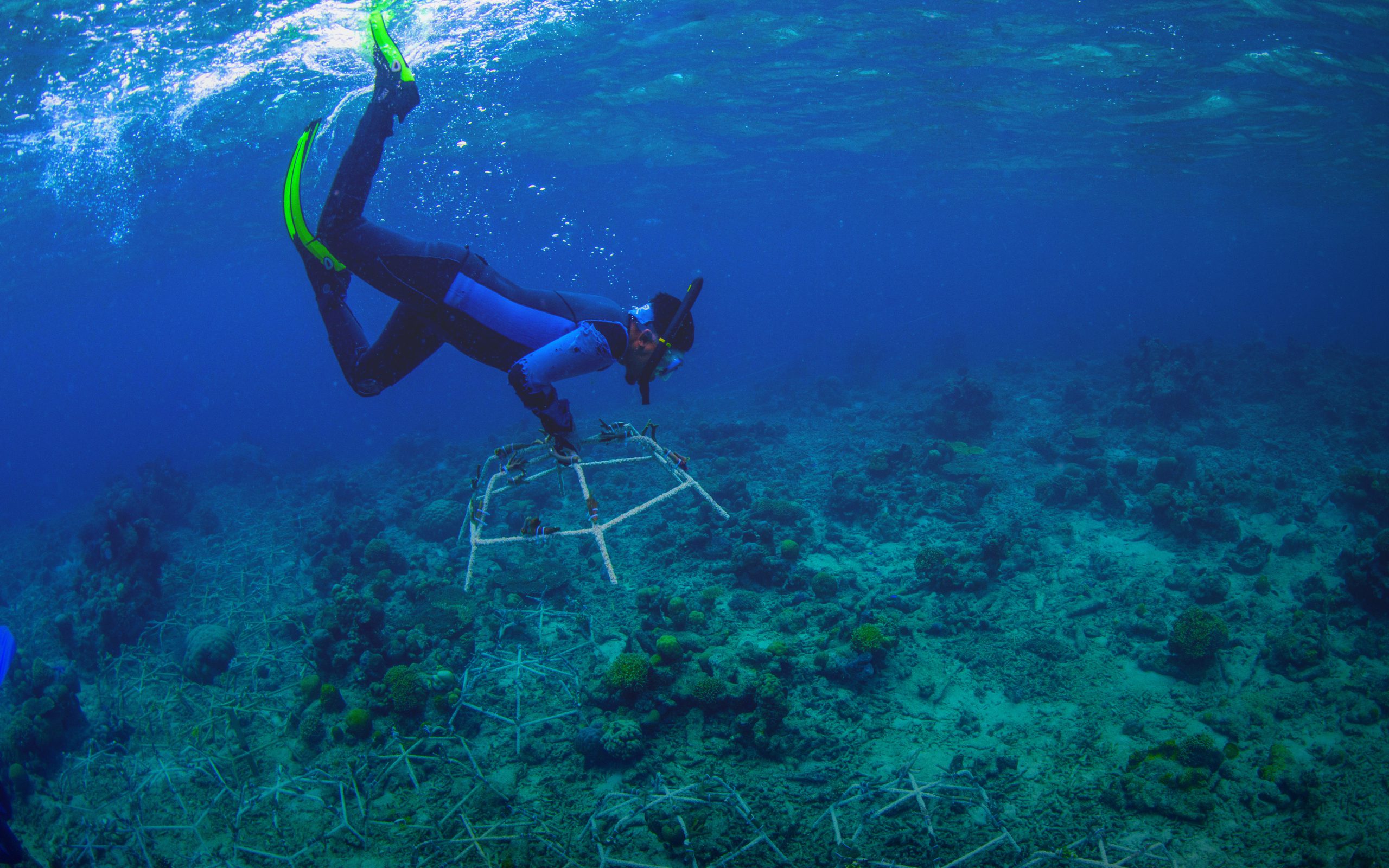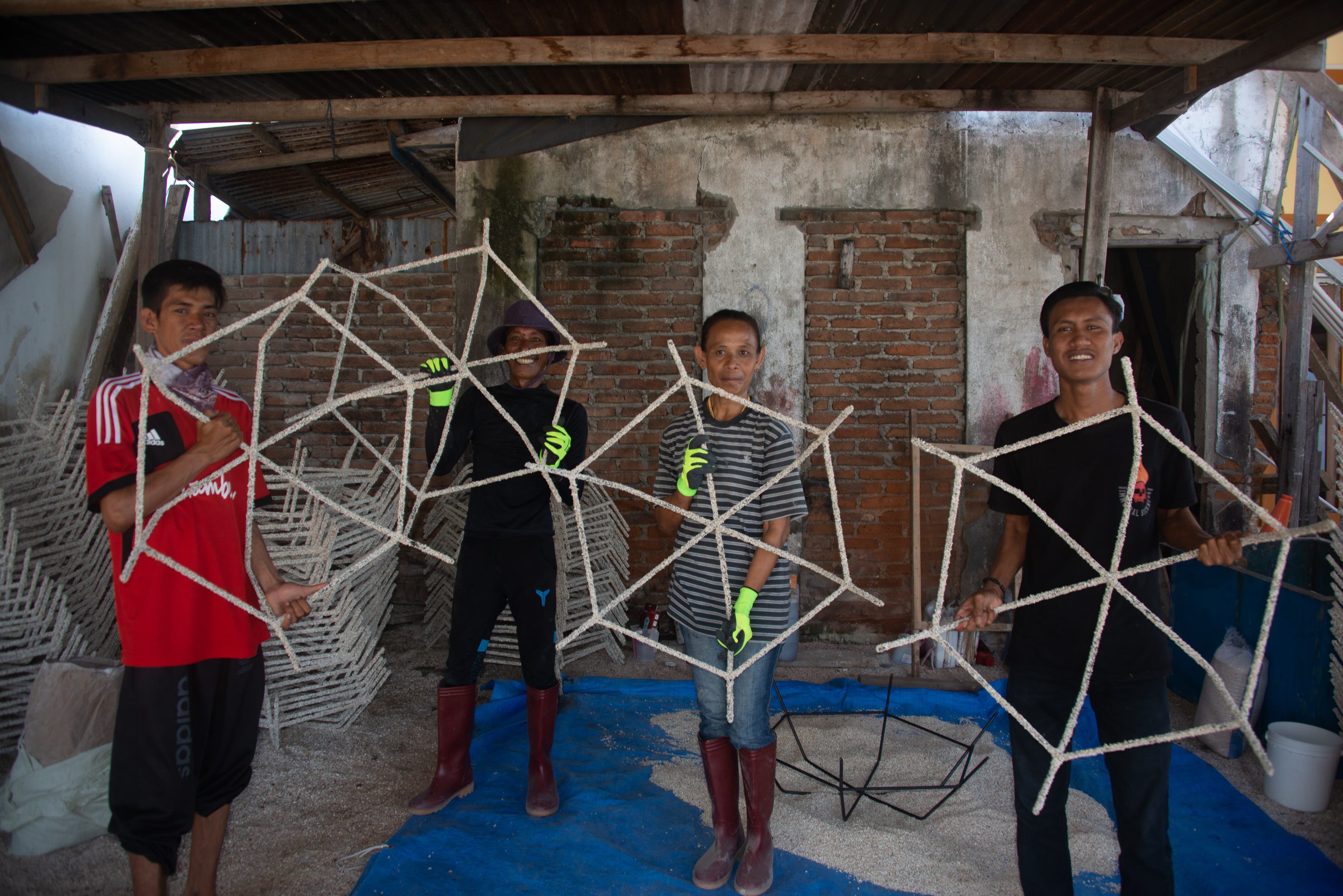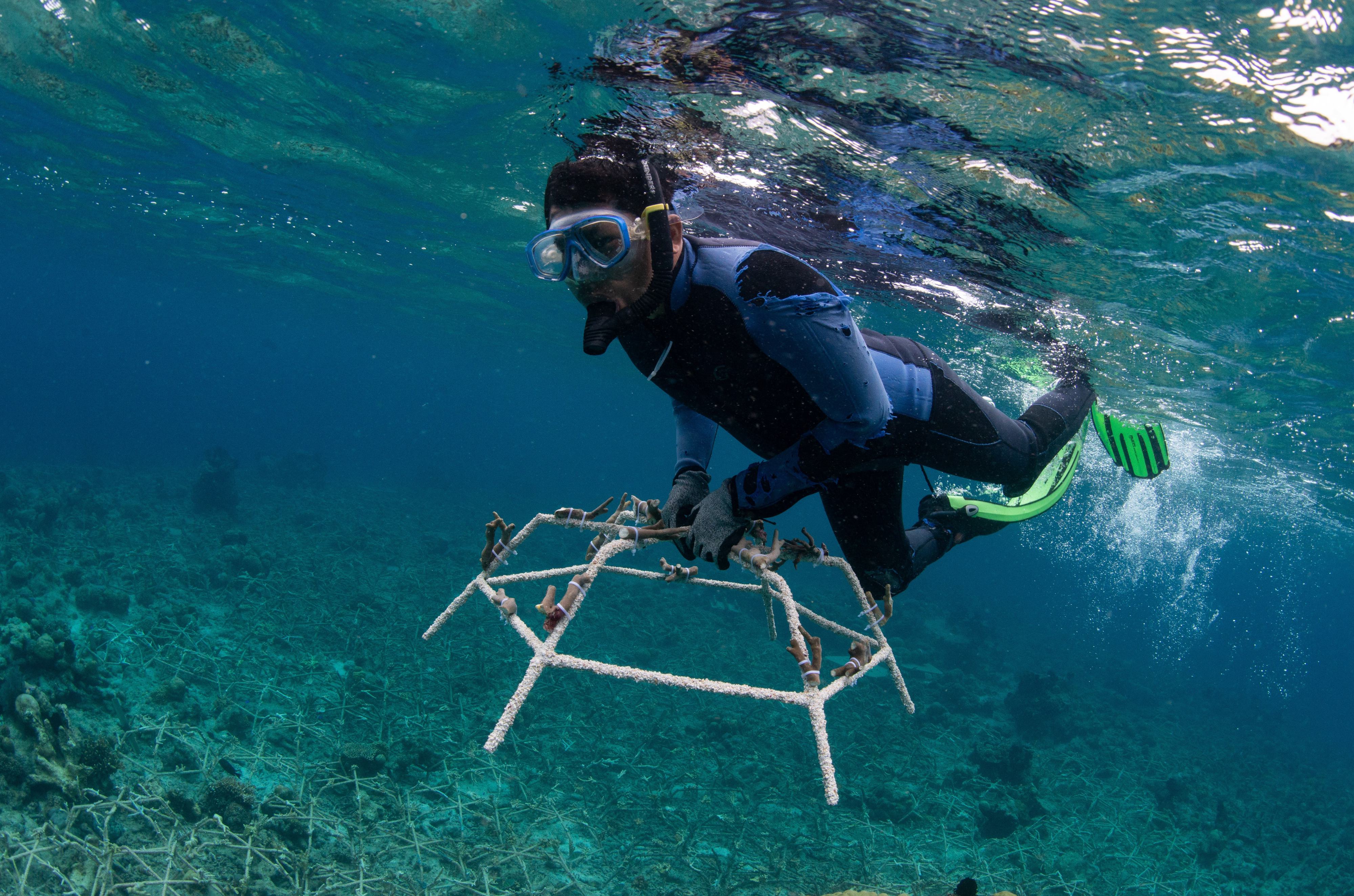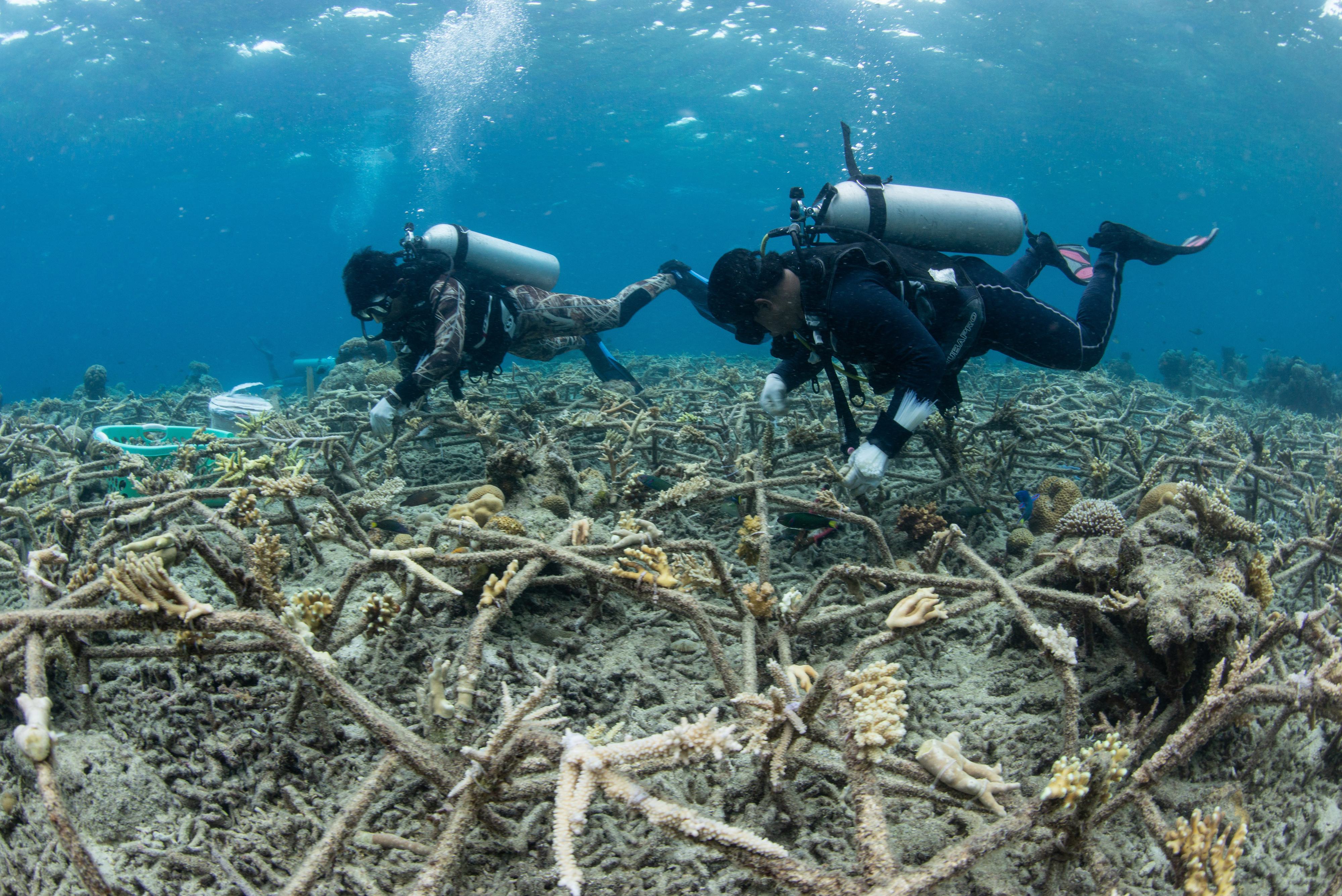
Our Solution
For over a decade, we have been developing a simple solution to help restore damaged coral reefs.
Mars Assisted Reef Restoration System
Our solution is a holistic approach to reef restoration. We carefully choose sites where restoration is both necessary and an appropriate solution; we work with local communities to establish sustainable programmes; we monitor our restored reefs regularly to ensure positive whole-ecosystem impact. We call this whole approach the Mars Assisted Reef Restoration System - MARRS. At the centre of the MARRS is a hexagonal structure that we call a Reef Star.
A Reef Star is born
Structure
We work with local communities who make strong, hexagonal Reef Stars from locally sourced materials.
Coating
We coat Reef Stars with resin and coral sand, which encourages corals and other animals to settle.
Coral
We attach a range of sustainably collected coral fragments to each Reef Star.
Working in close collaboration with local communities, organisations and reef stakeholders, we carefully choose sites where reef restoration is both necessary and feasible. Working in teams, we deploy Reef Stars in extensive webs that stretch across large areas of dead coral rubble. We can plant dozens of Reef Stars per hour, covering an area the size of a basketball court in just a few days.
These webs of Reef Stars stabilise loose rubble and provide a strong platform on which outplanted coral can grow. After a few years, the coral completely overgrows and engulfs the Reef Stars, which become fully integrated into the reef structure. This creates new habitats for fish and invertebrates and encourages the settlement of additional native corals. As natural ecological processes kick back into motion, the whole reef comes back to life.
Reef Stars in action - manufacture, coral attachment and underwater deployment
The MARRS approach has been highlighted by independent scientists as a stand-out example of good practice in large-scale marine restoration. Part of its success is down to its flexibility – Reef Stars could be deployed in conjunction with a range of other restoration methods for maximum effect. By combining Reef Stars with tools like micro fragmentation, larval enhancement and direct transplantation, we can achieve success in a wide range of different environments. To explore examples of other restoration techniques and programs, have a look at:
- Oceanus AC: Direct transplantation using the ‘light-bulb’ method on the MesoAmerican Barrier Reef
- Coral Nurture: Direct transplantation using ‘Coral Clips’ on the Great Barrier Reef
- Secore International: Larval enhancement and sexual reproduction at
- Plant a Million Corals: Microfragmentation techniques in the Caribbean
- FUNDEMAR: Coral larval seeding enclosures and larvae settlement structures in the Dominican Republic
For an extensive overview of the whole reef restoration toolbox, we recommend the International Coral Reef Initiative’s global database of reef restoration programs and The Nature Conservancy’s Reef Resilience Network.

Next section
Impact Below Water
Working with local communities in Indonesia, we have rebuilt 40,000 square metres of reef in the most biodiverse seas on the planet.







